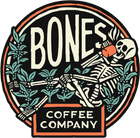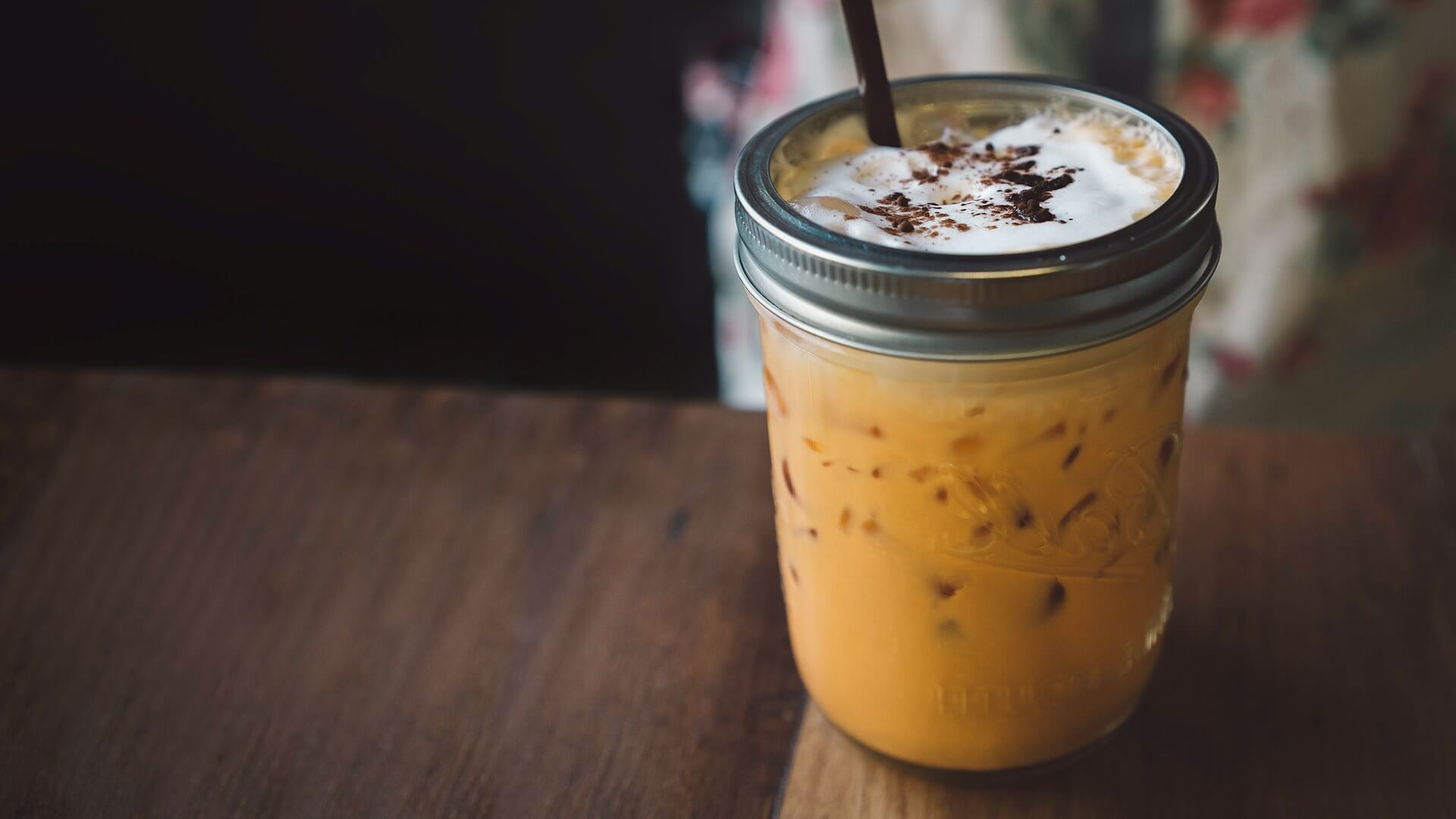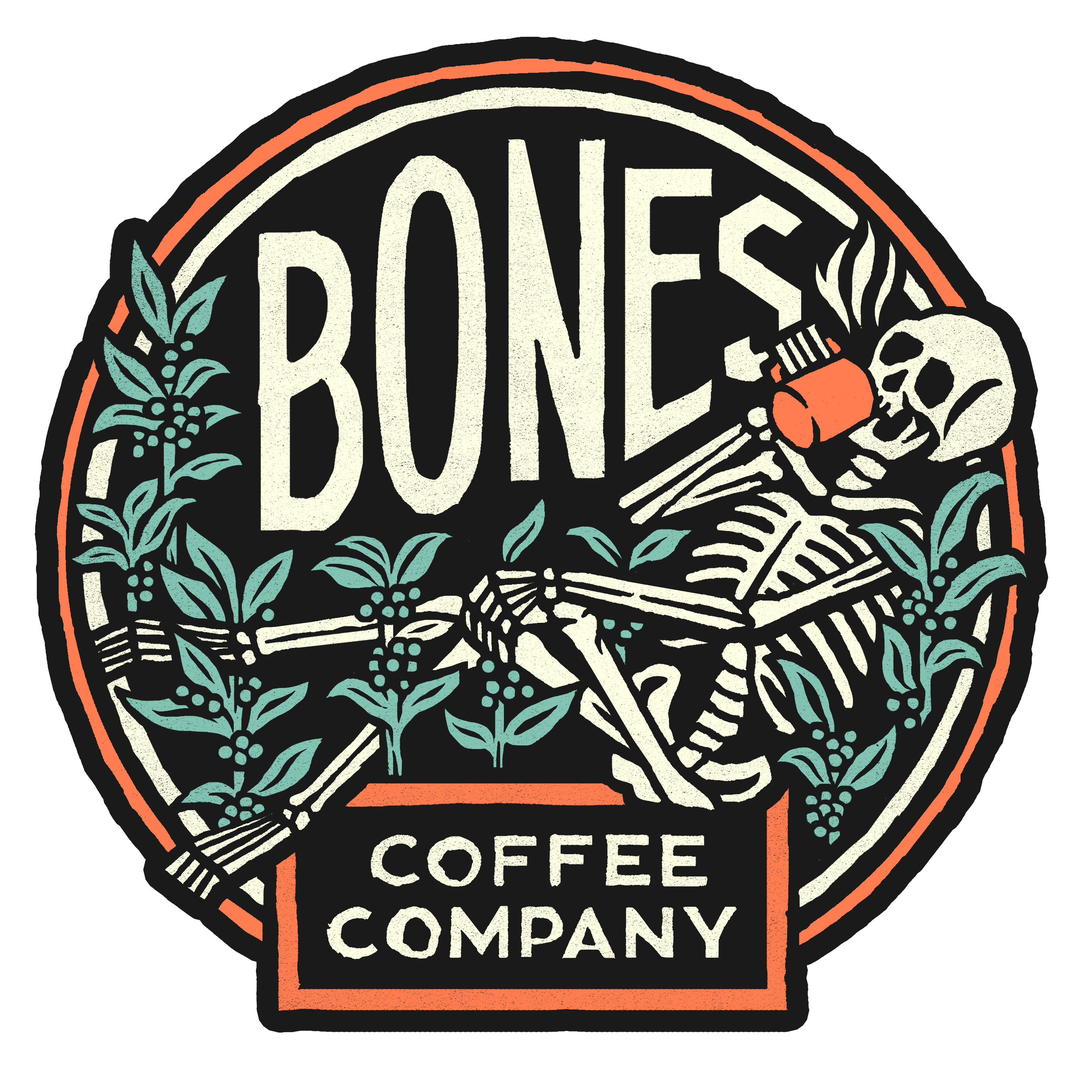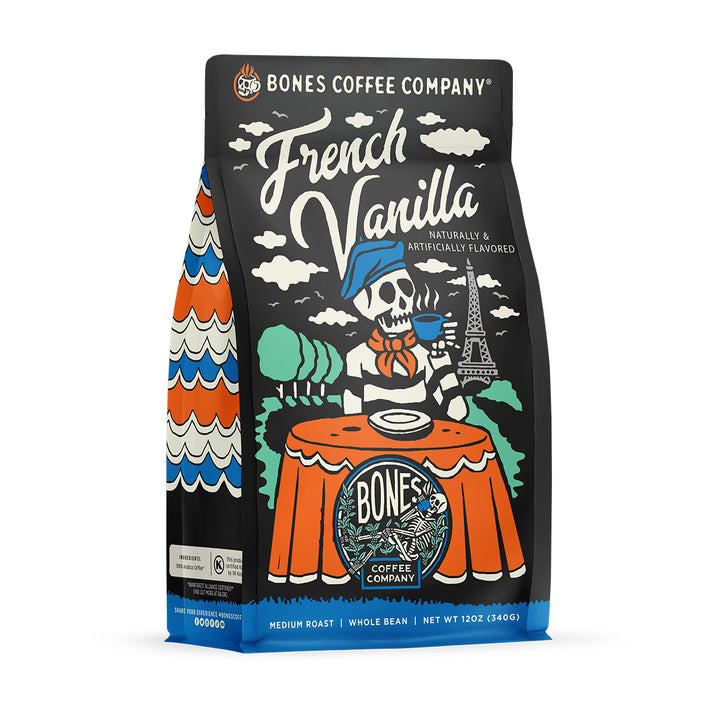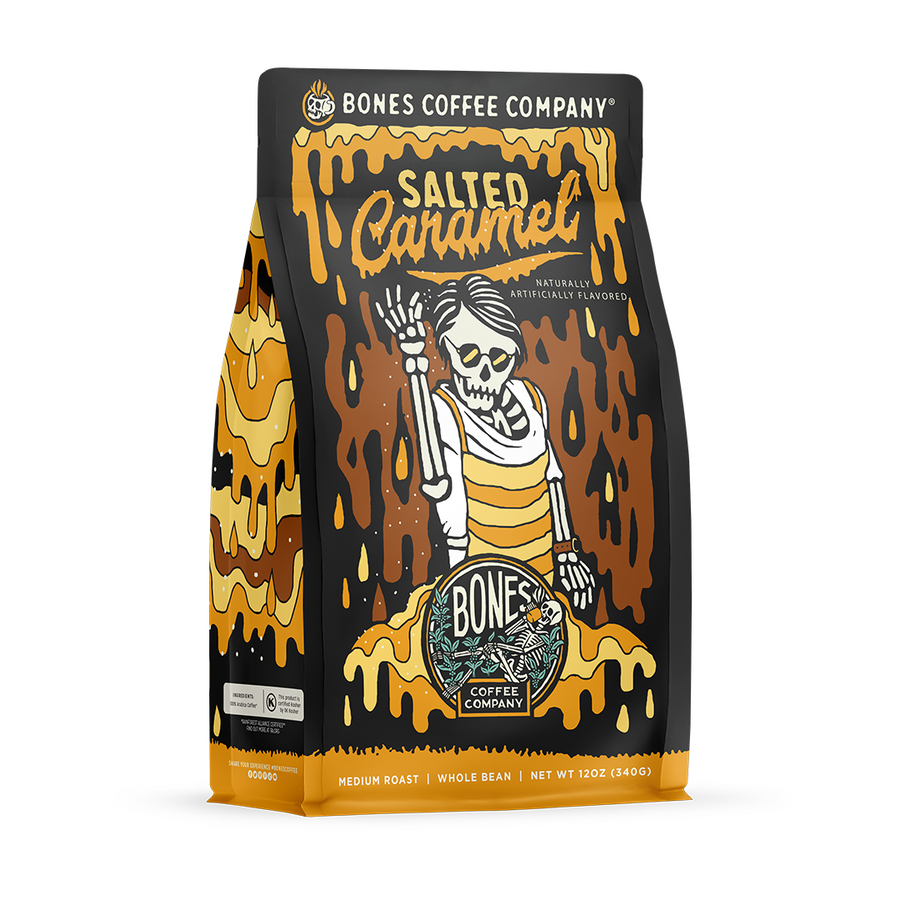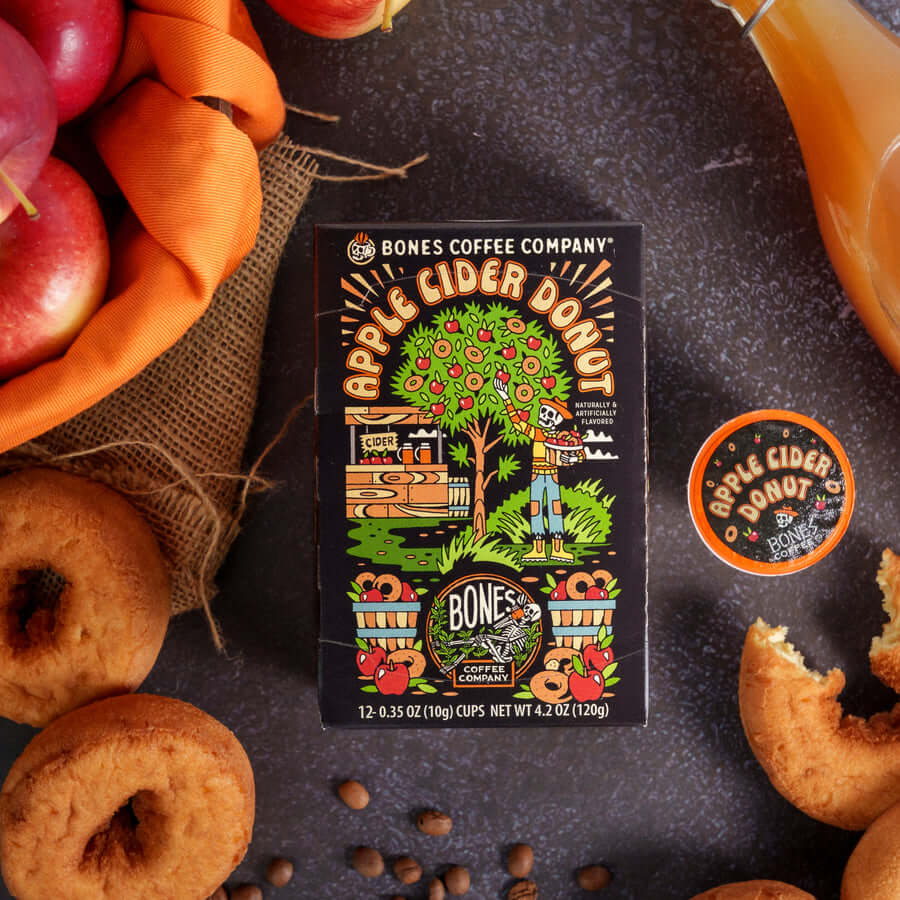Cold foam has taken the coffee world by storm, adding a creamy, velvety layer to your favorite cold coffee drinks. Whether you're a seasoned barista or a homebrew enthusiast, mastering how to make cold foam for coffee can elevate your coffee game to new heights.
Dive into this guide to discover a cold foam recipe you can make at home, transforming your daily cup into a café-quality treat. Get ready to impress your taste buds and your friends with this frothy, flavorful experience!
What is Cold Foam?
Cold foam is a delightful addition to the world of coffee, offering a creamy, frothy topping that elevates your favorite cold coffee drinks. Unlike traditional steamed milk foam used in hot drinks, cold foam is crafted to maintain its texture and flavor when served cold.
This innovative creation is made by frothing milk without heat, resulting in a light, airy consistency that sits beautifully atop iced coffees, cold brews, and even iced lattes.
The allure of cold foam lies in its versatility and the sensory experience it provides. The foam's texture resembles a soft cloud, providing a luxurious mouthfeel that contrasts with the chilled coffee beneath. This contrast enriches the drinking experience and allows for a gradual blending of flavors as the foam slowly integrates with the coffee.
Cold foam can be customized to suit individual preferences, making it a favorite among coffee enthusiasts who enjoy experimenting with flavors and textures, whether you prefer a classic, unflavored foam or a sweetened version like vanilla sweet cream cold.
The key to a perfect cold foam is the choice of milk and the frothing technique, which can be adjusted to achieve the desired consistency and taste.
Cold foam is more than just a topping; it's an invitation to explore new dimensions of flavor and texture in your iced coffee oe cold brew creations. Its ability to transform a simple drink into a gourmet experience makes it a must-try for anyone looking to enhance their coffee repertoire.
Chill Your Tools: For better foam stability, refrigerate your frothing container and whisk attachment before use. |
What Ingredients Do You Need for Cold Foam?
Creating the perfect cold foam for your iced coffee is an art that begins with selecting the right ingredients. Each component is crucial in achieving that velvety texture and delightful taste coffee enthusiasts crave.
Here’s a guide to the essential ingredients you’ll need to craft your cold foam masterpiece:
Milk
The cornerstone of cold foam is milk selection, which is vital. Whole milk is often preferred for its rich texture, but low-fat and skim milk can also be used for a lighter foam. For those seeking a dairy-free option, almond, oat, or soy milk can be excellent alternatives, though they may produce a slightly different texture.
Sweeteners
While not mandatory, sweeteners, such as powdered sugar, maple syrup, or vanilla syrup, can enhance the flavor profile of cold foam.
Options include:
- Granulated Sugar: A classic choice for a touch of sweetness.
- Simple Syrup: Dissolves easily and blends seamlessly with milk.
- Honey or Agave Nectar: For a natural sweetness with a hint of floral or earthy notes.
Flavorings
Elevate your cold foam with various flavorings to create a unique coffee experience. Consider:
- Vanilla Extract: A popular choice for its warm, inviting aroma.
- Cocoa Powder: For a chocolate twist that pairs beautifully with coffee.
- Spices: Cinnamon, nutmeg, or cardamom can add a spicy kick.
Stabilizers
Consider adding a stabilizer to maintain the foam’s structure, especially when using non-dairy milk. Options include:
- Xanthan Gum: A small pinch can help thicken and stabilize the foam.
- Cornstarch: Another option to enhance the foam’s consistency.
By carefully selecting and combining these ingredients, you can create a cold foam that complements your coffee and transforms it into a luxurious treat. Whether you prefer a classic vanilla flavor or a bold, spiced infusion, the endless possibilities allow you to tailor your cold foam to your personal taste preferences.
What Equipment is Required to Make Cold Foam?
Creating the perfect cold foam at home is an art that requires the right tools to achieve the velvety texture coffee enthusiasts crave. While a specialized frother is often the go-to choice, several other options can help you craft this delightful topping without compromising on quality.
- Electric Milk Frother: Provides consistent, effortless frothing with multiple settings, though it requires an outlet and a bit of an investment.
- Handheld Milk Frother: Compact and easy to use for quick frothing, but may take extra effort to achieve the perfect foam.
- Blender: Ideal for making larger batches and mixing flavors evenly, though it can be tricky to clean and requires careful monitoring.
- French Press: A versatile tool that controls frothing but takes more manual effort and may not create ultra-fine foam.
- Jar with Lid: A no-cost, DIY method using common kitchen items, but it requires vigorous shaking and can yield inconsistent results.
Each tool offers a unique approach to creating cold foam, allowing you to experiment and find the best method for your taste and lifestyle. Whether you prefer an electric frother's precision or a jar's simplicity, the right equipment can elevate your coffee experience.
Science of Froth: Milk proteins (especially casein) trap air bubbles, giving cold foam its signature texture. |
What are the Steps to Make Cold Foam?
Creating cold foam at home is a delightful process that transforms your coffee experience into a creamy, luxurious affair. Follow these steps to achieve the perfect cold foam:
Step 1: Select Your Milk
Begin with cold milk, as it froths better than warm milk. Whole milk is often preferred for its rich texture, but feel free to experiment with different types to find your ideal consistency.
Step 2: Measure the Milk
Pour about 1/4 cup of milk into a frothing pitcher or a narrow container. This amount is typically sufficient for a single serving of cold foam.
Step 3: Frothing the Milk
Use a milk frother to whip the milk into a light, airy foam. If you don't have a frother, a handheld electric whisk or a blender can do the trick. Froth the milk for about 15-30 seconds until it doubles in volume and forms soft peaks.
Step 4: Check the Consistency
The foam should be thick and creamy, resembling the texture of whipped cream. If it's too thin, continue frothing for a few more seconds. If it's too thick, add a splash of milk and gently stir to adjust.
Step 5: Flavoring the Foam (Optional)
For an extra touch of flavor, consider adding a few drops of vanilla extract or a pinch of cinnamon before frothing. This step is optional but can elevate your cold foam to a gourmet level.
Step 6: Serving the Cold Foam
Gently spoon the cold foam over your iced coffee or cold brew. The foam should sit beautifully atop your drink, creating a visually appealing and delicious layer.
Step 7: Enjoy the Experience
As you sip your coffee, the cold foam will gradually mix with the drink, offering a smooth and creamy texture with every taste.
By following these steps, you can craft a cold foam that enhances the flavor of your coffee and adds a touch of elegance to your daily caffeine ritual.
What are Alternative Methods to Froth Milk?
Several innovative methods can transform the coffee experience for coffee enthusiasts eager to explore the art of crafting cold foam without a frother. These techniques offer a practical solution and add a touch of creativity to your coffee-making ritual.
French Press Method
- Steps: Pour cold milk into a French press, filling it no more than halfway. Secure the lid and vigorously pump the plunger up and down. This action forces air into the milk, creating luscious foam.
- Advantages: The French press method is efficient and produces a dense, creamy foam. It's perfect for those who own a French press and want to maximize its utility.
Jar Shaking Technique
- Steps: Pour cold milk into a jar, filling it halfway. Seal the lid tightly and shake the jar vigorously for 30 seconds to a minute. The shaking motion aerates the milk, producing a light and airy foam.
- Advantages: This method is simple and requires no special equipment. It's an excellent option for those who enjoy a hands-on approach and a bit of a workout.
Blender Method
- Steps: Add cold milk to a blender and blend on high speed for 30 seconds. The high-speed blades incorporate air into the milk, creating a smooth and frothy texture.
- Advantages: The blender method is quick and effective, producing a consistent foam. It's ideal for those who prefer a more automated process.
Whisking by Hand
- Steps: Pour cold milk into a bowl and use a whisk to beat the milk vigorously until foam forms. This method requires a bit of elbow grease but can be quite rewarding.
- Advantages: Whisking by hand allows for control over the foam's texture and is a great way to engage with the process physically.
Immersion Blender
- Steps: Submerge an immersion blender into a container of cold milk and blend until the desired frothiness is achieved. This method is efficient and easy to clean up.
- Advantages: An immersion blender offers precision and speed, making it a convenient tool for those with one in their kitchen arsenal.
Each method provides a unique way to create cold foam, allowing coffee lovers to experiment and find the technique that best suits their style and preferences. Whether you prefer the tactile satisfaction of shaking a jar or the swift efficiency of a blender, these alternative methods ensure that a lack of a frother won't stand between you and your perfect cup of coffee topped with delightful cold foam.
Salt Boost: A tiny pinch of salt in your cold foam can subtly enhance sweetness and balance flavors. |
Can You Use Non-Dairy Milk for Cold Foam?
Crafting cold foam with plant-based milk can be an exciting journey for coffee enthusiasts eager to explore the world of non-dairy options. Non-dairy milk offers a variety of flavors and textures, each bringing its own unique twist to your coffee experience.
Here’s a guide to help you navigate the frothy possibilities of non-dairy milk.
Top Non-Dairy Milk Options for Cold Foam
- Almond Milk: Known for its light and nutty flavor, it can create a delicate foam. However, its lower protein content may produce less stable froth than dairy milk.
- Oat Milk: A favorite among baristas, it is celebrated for its creamy texture and ability to froth well. Its natural sweetness complements coffee beautifully, making it a top choice for cold foam.
- Soy Milk: With a higher protein content, soy milk can produce a robust and stable foam. Its neutral flavor profile allows for versatile flavoring options, making it a reliable choice for cold foam enthusiasts.
- Coconut Milk: Offering a tropical twist, coconut milk provides a rich and creamy foam. Its distinct flavor pairs well with bold coffee blends, though its higher fat content may affect foam stability.
- Cashew Milk: Similar to almond milk, cashew milk offers a subtle nutty flavor. Its creamy consistency can yield a smooth foam, though it may require additional frothing time to achieve the desired texture.
Factors Influencing Non-Dairy Milk Frothing
- Protein Content: Higher protein levels generally lead to better frothing capabilities. Soy milk, with its higher protein content, often outperforms other non-dairy options in foam stability.
- Fat Content: While fat can add richness to the foam, excessive fat may hinder froth formation. Balancing fat content is crucial for achieving the perfect foam texture.
- Additives: Some non-dairy milks contain stabilizers or emulsifiers that can enhance frothing. Checking the ingredient list can help identify options that may froth more effectively.
Enhancing Non-Dairy Milk Froth
Use chilled almond milk or other non-dairy alternatives to optimize frothing, as colder temperatures can improve foam formation. Additionally, experimenting with different brands and formulations can lead to discovering the perfect non-dairy milk for your cold brew or iced coffee foam needs.
While non-dairy milk may present challenges in achieving the perfect cold foam, its diverse flavors and textures can elevate your coffee experience to new heights.
Whether you prefer the creamy allure of oat milk or the tropical notes of coconut milk, non-dairy options provide a canvas for creativity and flavor exploration in your coffee rituals. Mastering how to make cold foam for coffee with plant-based milk can bring a whole new dimension to your favorite drinks.
Enjoy a Café-Quality Experience at Home
Creating cold foam at home is a delightful way to elevate your coffee experience, offering a creamy, frothy topping that can be customized to your taste. With just a few simple ingredients and tools, you can whip up a café-quality treat in your kitchen.
Whether you're topping off iced coffee or experimenting with how to make cold foam for coffee, the results are always delicious.
The possibilities are endless, whether you’re experimenting with different milks or adding a splash of flavor to your cold brew. So grab your frother—or get creative with alternative methods—and start crafting your perfect cup of coffee magic!
